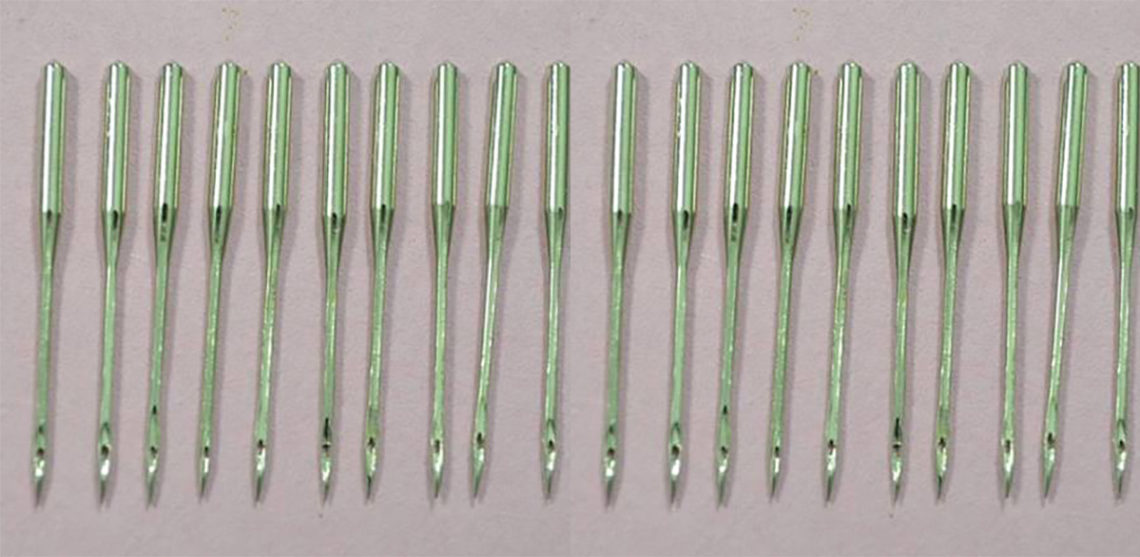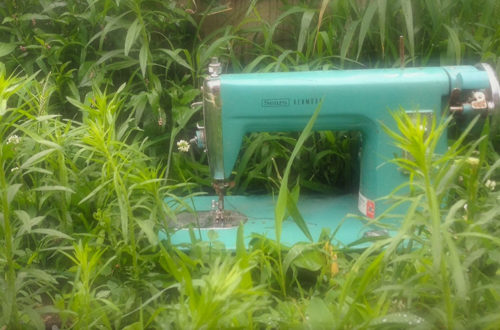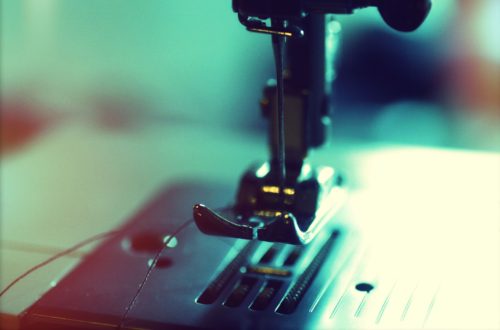
What’s the deal with sewing machine needles?
Why SEW dang confusing?
One of my favorite roles as sewing teacher is showing someone how to make THEIR sewing machine work for them.
Expensive, cheap, fancy, simple, old, new, Brother, Singer, Bernina. We love them ALL.
We don’t selling sewing machines in our studio, so we’re never urging them to buy one of ours, nor are we partial to one brand. I feel strongly that you can make *almost* any sewing machine work for you, as long as you treat it right.
So when people bring their cheap-o singer machines they bought in target and all it does is jam. Yeah – we can work with that. In fact, there is something totally satisfying about showing someone how to get that baby going!
Here’s the first thing I check: What’s happening with the needle?
-
- Is the needle inserted in the machine correctly? Be sure the flat part of the upper needle is facing towards the back. Sometimes this is where the writing is. Writing & flat side should be facing away from you. The eye of the needle should be visible from the front. Place your finger behind the eye to make the whole more visible. Most modern sewing machines the needle will thread front to back. If you have an older machine and suspect it threads left to write, confirm by checking the manual or by doing a google search
- Is the needle inserted in the machine correctly? Be sure the flat part of the upper needle is facing towards the back. Sometimes this is where the writing is. Writing & flat side should be facing away from you. The eye of the needle should be visible from the front. Place your finger behind the eye to make the whole more visible. Most modern sewing machines the needle will thread front to back. If you have an older machine and suspect it threads left to write, confirm by checking the manual or by doing a google search
-
- Is the needle pushed up as far as it’s supposed to go?When you insert the needle into the spot where it goes, make sure the screw that holds the needle in there is all the loosened. Then when you push the needle up, you should feel it hit the bar. That’s when you tighten. First tighten with your fingers and then follow up tighten with a screw driver to make sure the needle doesn’t fall out later while you’re sewing.
- Is the needle pushed up as far as it’s supposed to go?When you insert the needle into the spot where it goes, make sure the screw that holds the needle in there is all the loosened. Then when you push the needle up, you should feel it hit the bar. That’s when you tighten. First tighten with your fingers and then follow up tighten with a screw driver to make sure the needle doesn’t fall out later while you’re sewing.
-
- Is it bent?Even the slightest bend in the needle can affect the way your sewing machine is stitching. Take the needle out of your sewing machine and inspect it closely. Lay it on the table and see if it lays flat? Run your finger along to see if there is a curve to the needle.
- Is it bent?Even the slightest bend in the needle can affect the way your sewing machine is stitching. Take the needle out of your sewing machine and inspect it closely. Lay it on the table and see if it lays flat? Run your finger along to see if there is a curve to the needle.
-
- Is the sewing machine threaded correctly?Maybe this one should go first, but I wanted this post to be more about troubleshoot your sewing machine needle. But it goes without saying that if your sewing machine is not threaded correctly, it’s not going to sew correctly. Check your manual or do a quick google search if you don’t have access to the manual. Follow the steps CLOSELY and thread your needle. 9 times out of 10 if you’re machine is not working, it’s just not threaded correctly.
- Is the sewing machine threaded correctly?Maybe this one should go first, but I wanted this post to be more about troubleshoot your sewing machine needle. But it goes without saying that if your sewing machine is not threaded correctly, it’s not going to sew correctly. Check your manual or do a quick google search if you don’t have access to the manual. Follow the steps CLOSELY and thread your needle. 9 times out of 10 if you’re machine is not working, it’s just not threaded correctly.
-
- Is it the right type of needle for their machine?Nowadays most home sewing machines use the same type of sewing machine needle. It has a flat back and rounded front. These are the ones that you’ll find at your notions stores. Some common brands are Singer (which tend to be slightly longer than other brands, but if you have a singer will work just fine), Schmetz & Organ. All are available on Amazon, as well. But maybe you’re sewing on an older model and it requires a special type of needle. Again – you’re going to have to check your manual or find a PDF of the manual on google.
- Is it the right type of needle for what they are sewing? The really big question – Keep on reading for a little sewing machine needle primer.
Universal Point – The point is slightly rounded and can be used for most woven fabrics. These needles come in different sizes. The three most common sizes are 70/10 (sm), 80/12 (med) and 90/14 (lg). There are two numbers listed because needle manufacturers include both the american sizing (first number) and the European sizing, rather than just one or the other. In our classes we tend to keep the largest size on our machines, most of the time. They aren’t as easy to break and tend to last the longest. But if a student is working with very thin, delicate fabric, we’ll switch it up to a slightly smaller universal needle or even a sharp point needle (see below).
Ball Point – These are the needles used for sewing knit fabrics. The tip of the needle is rounded so that when it goes in and out of the stretchy fabric fibers it doesn’t break the threads in the weave. If you’ve noticed that you’re sewing knits and it’s not sewing a stitch each time the needles goes up and down, this is why. Try switching to a ball point needle and you’ll see a dramatic difference. Quick note, keep your ball points in a special container and be sure to take it off the machine after your done sewing knits (unless of course that’s all you sew.).
Sharp Point – The tips of these needles are, you guessed it, sharp. They are used with woven fabrics that require a slightly sharper tip when sewing. For example sharps are better for fabrics that have a slightly tighter weave and tend to be a little more delicate.
There are obviously way more types of needles than just the three I’ve listed above, but in all my years of sewing and teaching, these are the three we tend to use over and over again. The less sewing junk I have to deal with the happier person and teacher I am.
I hope this helps clarify all your sewing machine needle questions. If you have something specific that is still confusing you, please don’t hesitate to reach out. I would LOVE to hear from you!




